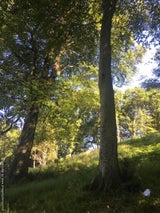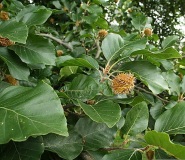- Home
- >
- Broadleaved Tree Seeds A-I by Latin Name
- >
- Green Beech (fagus sylvatica)
Green Beech (fagus sylvatica)
SKU:
£1.15
1.15
60
£1.15 - £60.00
Unavailable
per item
Seed Prices
5 grams (approx 22 seeds) £1.15
10 grams (approx 45 seeds) £1.45
25 grams (approx 112 seeds) £2.50
50 grams (approx 225 seeds) £4.10
100 grams (approx 450 seeds) £7.00
250 grams (approx 1125 seeds) £18.25
500 grams (approx 2250 seeds) £35.00
1000 grams (approx 4500 seeds) £60.00
Although these seeds are from a good source they are not approved for forestry use
Use the drop down button below to select the quantity
Germination, Sowing and After Care Information for
Beech (fagus sylvatica)
Beech seeds contain a natural dormancy within them. This must be broken down for successful germination to occur. Simply planting untreated seed will most likely give disappointing results.
First mix your seeds with an appropriate volume of moist compost. As a rough guide, a volume that is roughly double that of the volume of your seeds is about right. If is slightly more or less it's ok. The aim is to have enough compost mixed between the seeds to separate the seeds from each other. The compost can be any general potting compost or you can make your own mix of 60/40 peat and sharp sand.
The compost must be MOIST and not wet. If you can squeeze water from the compost with your hand, it is too wet. If the compost mix is too wet the seeds will drown and not germinate.
Place your compost and seed mix into a clear plastic bag (freezer bags are great for this) and tie the bag loosely so that there can be a small degree of air exchange from within the bag. Label the bag and include the date that you started to pretreat the seed. Place the bag in the fridge (not the freezer!!) and after a couple of weeks start to check it at least once a week to see if they have begun to germinate. A small white root will emerge from the pointed part of the seed. If the compost begins to get dry, add a little water. Once around 10% of the seeds have begun to germinate, the dormancy is broken and it is time to get them sown quickly.
If you are planting the in pots these should be at least 15+cm deep to allow development of the strong taproot that this species has. Any general, good quality potting compost containing a slow release fertilizer will give you good growth, and is usually far superior to using general garden soil for container grown plants. When your trees are large enough-perhaps after two growing seasons, plant them in their permanent position. Keep them free from grass and weeds and protect them from rabbits. Height growth in the first year will range between 15 and 40cm depending growing conditions. Keep them well watered and never let them wilt! Seeds sown under glass should be brought outside in early summer.
If you are sowing them outside the pretreatment and sowing needs to be timed so that the seeds will emerge from the ground around mid May (depending on your locality)-after the last ground frosts. Beech are very sensitive to frost especially as they emerge from the soil. It will kill them. If there is a late spring frost the seedlings must be protected. Seeds sown outdoors must also be protected from rodents and pigeons. Always look out for aphid attacks which will cause leaf and stem distortion.
First mix your seeds with an appropriate volume of moist compost. As a rough guide, a volume that is roughly double that of the volume of your seeds is about right. If is slightly more or less it's ok. The aim is to have enough compost mixed between the seeds to separate the seeds from each other. The compost can be any general potting compost or you can make your own mix of 60/40 peat and sharp sand.
The compost must be MOIST and not wet. If you can squeeze water from the compost with your hand, it is too wet. If the compost mix is too wet the seeds will drown and not germinate.
Place your compost and seed mix into a clear plastic bag (freezer bags are great for this) and tie the bag loosely so that there can be a small degree of air exchange from within the bag. Label the bag and include the date that you started to pretreat the seed. Place the bag in the fridge (not the freezer!!) and after a couple of weeks start to check it at least once a week to see if they have begun to germinate. A small white root will emerge from the pointed part of the seed. If the compost begins to get dry, add a little water. Once around 10% of the seeds have begun to germinate, the dormancy is broken and it is time to get them sown quickly.
If you are planting the in pots these should be at least 15+cm deep to allow development of the strong taproot that this species has. Any general, good quality potting compost containing a slow release fertilizer will give you good growth, and is usually far superior to using general garden soil for container grown plants. When your trees are large enough-perhaps after two growing seasons, plant them in their permanent position. Keep them free from grass and weeds and protect them from rabbits. Height growth in the first year will range between 15 and 40cm depending growing conditions. Keep them well watered and never let them wilt! Seeds sown under glass should be brought outside in early summer.
If you are sowing them outside the pretreatment and sowing needs to be timed so that the seeds will emerge from the ground around mid May (depending on your locality)-after the last ground frosts. Beech are very sensitive to frost especially as they emerge from the soil. It will kill them. If there is a late spring frost the seedlings must be protected. Seeds sown outdoors must also be protected from rodents and pigeons. Always look out for aphid attacks which will cause leaf and stem distortion.





